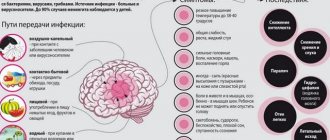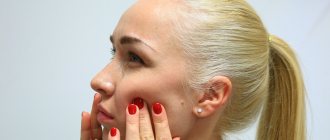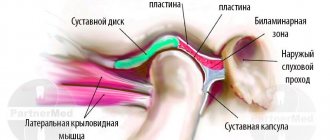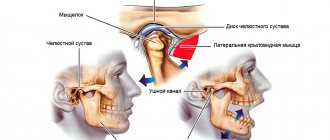Publication date: March 13, 2022.
Information on this page was updated on December 31, 2021.
TMJ dysfunction is a fairly common pathology these days, as it is largely caused by stress factors. Here it can be difficult to understand what is primary and what is secondary, because people with joint dysfunction usually come with bite pathology, pathology of the musculoskeletal system (curvature of the spine, neck). Therefore, joint treatment is a complex story. It happens that the primary pathology is a pathology of the joint, and sometimes it is the musculoskeletal system.
Comprehensive treatment of TMJ
When the doctor has determined the cause of the joint pathology, or causes, he determines the patient's readiness for a comprehensive treatment plan. In addition to the orthodontist, an osteopath or chiropractor may be involved, or even an orthopedist if more complex correction of the musculoskeletal system is required.
The patient should be aware that it is possible to straighten the jaw using a splint or splint, but this will not solve the problem of malocclusion. Orthodontic treatment will be required to correct the bite. If you have already had orthodontic treatment before, then it is more difficult to decide on repeated treatment.
Therefore, first the problem with the joint is solved using a splint or joint splint, then bite correction is carried out, and, if necessary, prosthetics. In parallel, work is underway with an osteopath to restore the muscular corset of the back and neck.
It happens that a patient refuses treatment with braces after the problem with the joint has been resolved. In this case, we warn him about the need to wear a joint splint constantly in order to avoid the recurrence of old problems with the TMJ. After all, a relapse can happen quite quickly due to stress.
Accurate diagnosis
Since the jaw joint has a complex structure, there are many possible causes for the development of arthrosis. This significantly complicates the process of diagnosing and identifying the problem causing it. The dentist questions and examines the patient for facial asymmetry, sunken lips, cracks in their corners, palpates the muscles, determining the stiffness of movements. The doctor will determine arthrosis of the jaw joint immediately after these actions.
To determine the stage of development of the disease and its localization, radiography is most often used. An x-ray allows you to see the resulting deformations, bone growths, and changes in their shape. Less commonly used are CT scans, electromyography, contrast radiography, or braces (orthodontic brackets).
What may be the symptoms of TMJ dysfunction?
- Tenderness or pain in the area of one or both TMJs at rest or when opening the mouth.
- Crunching, clicking, crepitation and other noises in the area of one or both TMJs when opening the mouth.
- History of TMJ injuries (previous), incl. dislocation, subluxation, chronic subluxation.
- Restrictions in the mobility of the TMJ, restrictions in opening the mouth.
- Excessive tone of the masticatory muscles, bruxism (“grinding” of teeth in sleep, at rest).
- Asymmetry of the chin, lips, lip frenulum, asymmetry of mouth opening, S-shaped opening.
- Suspicion of a forced position of the lower jaw.
Structure of the TMJ
The presence of one or more of the above symptoms may indicate TMJ dysfunction.
Traditional orthodontic treatment does not address TMJ dysfunction. During orthodontic treatment, the severity of dysfunction may not change, decrease or increase. At the moment, in the world scientific orthodontic literature there is no convincing data on the connection between orthodontic treatment and the condition of TMJ. Deterioration of the joint after treatment may have nothing to do with this treatment.
Note! Even in the absence of visible clinical manifestations of joint dysfunction, hidden disorders may occur that require special diagnostics to identify them.
If there is a forced incorrect position of the lower jaw, its position may change during the treatment process with changes and complication of the treatment plan (the need to remove individual teeth, increasing the duration of treatment). A reliably forced position cannot be diagnosed by traditional orthodontic methods; to verify its presence, as a rule, a special analysis is required (manual functional analysis, determination of the central relationship of the jaws), the use of a special articular splint for a period of several months, which, however, does not give 100 % guarantees.
To conduct a detailed articular diagnosis, explain the specifics of your case, and further manufacture an articular splint, you can make an appointment with an orthodontist who deals with the issue of TMJ dysfunction.
TMJ dysfunction is a chronic condition that can be compensated, but not cured (i.e., it is possible to eliminate symptoms, however, pathological changes in the joints, if they have already occurred, will most likely persist).
What is arthrosis?
The jaw joint is where the lower jaw bone attaches to the skull. The jaw articulation is one of the most complex, combining multiple muscles and ligaments that allow for different movements. Any problem that interferes with the proper functioning of muscles, ligaments, discs and bones can cause a painful condition called temporomandibular dysfunction, or arthrosis of the jaw joint.
With arthrosis of the TMJ, the macroscopic structure of the cartilage undergoes changes: histologically, there is a loss of proteoglycans, breakdown of the collagen fiber network and fatty degeneration. Microcracks appear in the bone tissue, its density increases, and osteophytes can form. Such violations deprive a person of many things in everyday life: the process of talking, eating becomes more difficult, and hearing is impaired.
Osteoarthritis of the jaw joint develops in four stages:
- the initial stage (I) is characterized by articular instability caused by uneven narrowing of the joint space against the background of degenerative changes in the cartilaginous structures;
- progressive stage (II) is accompanied by a decrease in joint mobility, an increase in pain, and an exacerbation of symptoms of the disease. The worsening of the condition is associated with ossification of the condylar process of the mandible;
- late stage (III) leads to limitation of the functions of the TMJ as a result of complete degeneration of cartilage tissue, the appearance of osteophytes, reduction of the condylar process and other destructive changes;
- advanced stage (IV) with fibrous fusion of joints.
Depending on the identified radiological changes, the type of arthrosis of the TMJ is determined, which can be sclerosing and deforming. In the first case, a narrowing of the joint space and the development of bone sclerosis are noted. The second is characterized by widening of the joint, bone growths in the form of tubercles on the articular surfaces and alignment of the articular fossa, severe deformation of the lower jaw.
Depending on the origin of TMJ arthrosis, it can be primary or secondary. Primary arthrosis occurs without previous joint disease at the age of 40 years and is polyarticular in nature. Secondary develops in a previously changed joint due to an impaired relationship of articular surfaces against the background of concomitant diseases.
What happens if TMJ dysfunction is not treated?
If the dysfunction is not treated, the compensatory capabilities of the body may sooner or later be exhausted, the symptoms will worsen, the pathology will begin to progress, causing greater discomfort (sometimes for several years), thereby affecting the deterioration of the function of the dental system.
In order to try to prevent this and carry out treatment taking into account the individual characteristics of the structure and functioning of the temporomandibular joints, patients are usually offered the following approach.
Treatment method for TMJ dysfunction
1. Diagnosis of TMJ dysfunction.
- When diagnosing a joint in the clinic, a series of measurements and tests are carried out, all sensations in the joint area are recorded (discomfort, clicks, pain, deviation of the jaw when opening and closing), the difference in sensations in the right and left joint.
- The orthodontist also takes impressions of the jaws and takes photographs of the face and intraoral photographs, and also performs three-dimensional computed tomography of the face (3D CT); if necessary, the doctor can give a referral for an additional study - magnetic resonance imaging of the TMJ (MRI).
- Often, the orthodontist, in addition to manual functional analysis, conducts a visual assessment of: posture, symmetry of the shoulder girdle, shoulder blades, hip bone structures, etc., performs the necessary tests and photographs. Based on the results, it is possible to schedule a consultation with an osteopath or chiropractor to jointly manage the patient. Related specialists (orthopedist, surgeon, periodontist) can also be involved in drawing up a treatment plan.
What exercises are prescribed to patients to normalize the work and relax the masticatory muscles?
Exercise No. 1
Draw a vertical line on the mirror with a marker, stand opposite so that the line divides your face into the right and left halves, place your fingers on the area of the articular heads, lift your tongue up and back, open and close your mouth along the line (it may not work right away), 2-3 times /day 30 repetitions. There is no need to open your mouth wide (a comfortable width), the main thing is symmetrically (so that the jaw does not “move” in any direction). If there is a click, open until it clicks.
Exercise No. 2 (cycle)
Do it whenever possible, for example, in front of the TV, at the computer, or in a traffic jam while driving. Open and close your mouth without closing your teeth for 30 seconds, then alternately reach your right and left cheeks with your tongue for 30 seconds. Open - close your mouth again, then for 30 seconds move your tongue in a circle inside the vestibule (behind the lips), first in one direction, then in the other direction (clockwise - counterclockwise), open again - close your mouth, etc.. For this a half-hour cycle, the teeth should not touch, the lips should be closed. If you want to close your mouth or swallow, place your tongue between your teeth. Repeat the cycle for 20-30 minutes 2-3 times/day
Jaw joint dysfunction - essential information
The temporomandibular joint is responsible for the movement of the lower jaw and the function of chewing. When the functional activity of a joint is disrupted, the muscle groups of the neck, face and shoulder girdle are involved in the pathological process. In this case, patients complain of headache, muscle pain, and an unpleasant sound when moving the lower jaw.
Debilitating pain affects a limited number of patients. More than 70% of people experience pathology with an unexpressed clinical picture. Moreover, in most patients, chronic stress leads to dysfunction, so relaxation, relieving muscle tension, constant spasm and inflammation are used to eliminate it. However, if therapy is not started on time, dysfunction can turn into chronic pathology and lead to serious consequences.
Occlusive therapy for TMJ dysfunction
After diagnosis, the patient is scheduled for an appointment with the orthodontist to determine the central relationship of the jaws (“true” position of the lower jaw, the position in which your joint and chewing muscles will be most comfortable).
In order to more accurately establish and fix this position, an occlusal splint (splint) will be individually made for the patient from a special plastic, which is erased as it is worn. The splint must be worn constantly (sleeping, talking, eating in it if possible) - this is the meaning of occlusion therapy, which will help the joint and masticatory muscles rebuild into the most comfortable functional state.
Cleaning and caring for the splint is very simple - after eating (as well as while brushing your teeth), brush with a soft brush with toothpaste or soap.
Installation of a brace system for a patient with TMJ dysfunction
Installation of a brace system on the upper jaw is carried out on average after 3 months of occlusion therapy. The splint is adjusted once every 1-2 weeks, or at the discretion of the doctor, until the main complaints from the TMJ are eliminated (in parallel with the alignment of the teeth in the upper jaw), then a brace system is installed on the lower jaw with partial reduction (grinding) of the interfering parts of the occlusal tires, or complete removal. Here the patient needs to be patient - the process may take several months.
At the same time, the new position of the lower jaw is monitored: repeated manual functional analysis, photometry, bite registration is possible, computed tomography of the face during treatment, continuation of orthodontic treatment with a brace system.
Upon completion of orthodontic treatment, final monitoring of the position of the lower jaw follows (manual functional analysis, photometry, bite registration, 3D CT scan of the face upon completion (after) treatment).
Joint splint
Joint splint with braces
Reasons for development
Arthrosis occurs as a result of uneven load on joint tissues, which leads to gradual wear and tear of cartilage tissue. Joint overload can occur due to parafunctional habits (bruxism, nail biting), myofascial pain, misalignment and loss of teeth, misalignment of the upper and lower jaws, dental clefts, degenerative and inflammatory changes, also as a result of stress and trauma. Provoking factors:
- sedentary lifestyle;
- bad ecology;
- unbalanced and unhealthy diet;
- untimely visit to the dental office.
Causes of TMJ arthrosis:
- altered bite;
- chronic arthrosis;
- tooth decay;
- abnormalities of the jaw structure;
- excessive load on the joint (sports);
- incorrectly placed filling or prosthesis;
- wear of the disc or joint cartilage;
- macro- and microtrauma of the jaw or TMJ;
- jaw surgery;
- unsuccessful orthodontic treatment;
- genetic predisposition;
- diseases of the vascular system;
- infections;
- rheumatoid arthritis, gout, diseases that cause inflammation of the jaw;
- neuroses and stress;
- pathologies of the endocrine system;
- menopause;
- staying with your mouth open for too long (at the dentist);
- hormonal imbalance;
- The patient's age is over 50 years.
Risk factors also include dental deformation, missing side teeth, or tooth wear as a result of other pathology.
How to help yourself:











